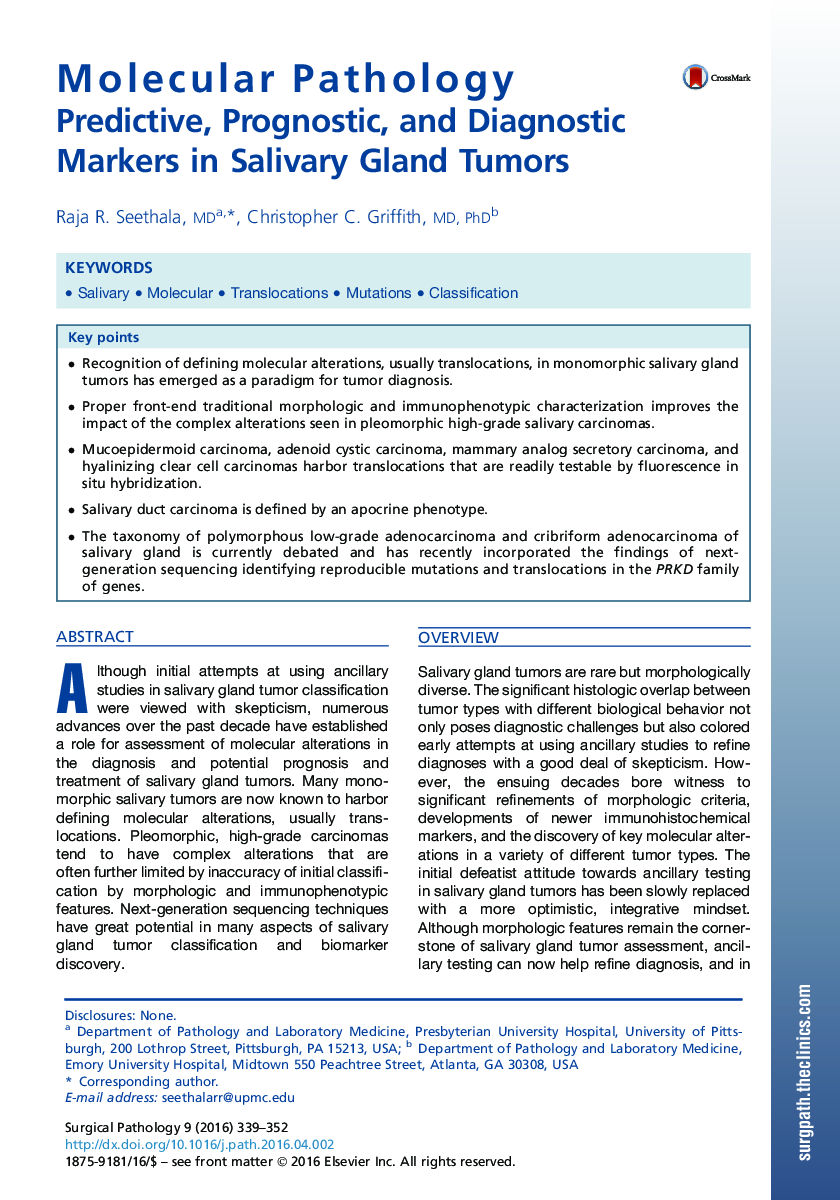| Article ID | Journal | Published Year | Pages | File Type |
|---|---|---|---|---|
| 3334287 | Surgical Pathology Clinics | 2016 | 14 Pages |
Abstract
Although initial attempts at using ancillary studies in salivary gland tumor classification were viewed with skepticism, numerous advances over the past decade have established a role for assessment of molecular alterations in the diagnosis and potential prognosis and treatment of salivary gland tumors. Many monomorphic salivary tumors are now known to harbor defining molecular alterations, usually translocations. Pleomorphic, high-grade carcinomas tend to have complex alterations that are often further limited by inaccuracy of initial classification by morphologic and immunophenotypic features. Next-generation sequencing techniques have great potential in many aspects of salivary gland tumor classification and biomarker discovery.
Related Topics
Health Sciences
Medicine and Dentistry
Hematology
Authors
Raja R. Seethala, Christopher C. Griffith,
